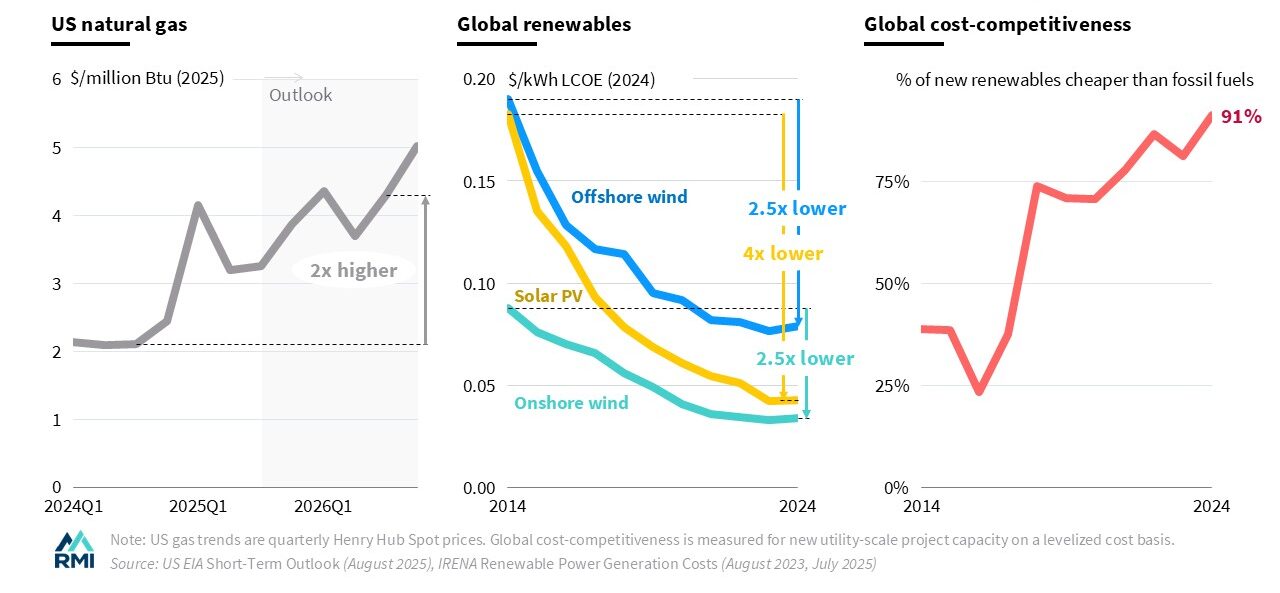Volatility vs. Affordability: Globally, Renewables’ Cost Advantage Grew Last Year
While US natural gas prices are on the rise, more than 90 percent of last year's new global renewable energy capacity was cheaper than a fossil fuel alternative.

Spark Chart , Strategic Insights | August 13, 2025
Affordable electricity is a major concern around the world. In the past year, wholesale electricity prices in the United States and Europe have risen by 30–40 percent — and while consumer costs include other factors, US homes have seen a similar rise in the price they pay over the past five years. As the world navigates a new age of electricity load growth, cutting costs is paramount.
But comparing the United States with the rest of the world, electricity sources are trending in opposite directions.
On one hand, US natural gas prices are expected to double between 2024 and 2026, according to the Energy Information Administration (EIA)’s August Short-Term Energy Outlook. This trend is flatter overseas, and might change in the longer term, but it is yet another example of gas power’s volatility. Just three years ago, Russia’s invasion of Ukraine raised global prices by triple or more — leaving poorer countries in the cold as the world scrambled to replace lost supply.
Prices for renewable energy, meanwhile, continue to fall. Wright’s Law explains why some technologies get cheaper as production increases, with learning rates that remain remarkably consistent across decades. Such is the case for wind, solar, and batteries, as shown by recent reports from the UN and International Renewable Energy Agency. With global cost declines of 2.5x–4x over the past decade —and 9x for battery storage — clean energy systems are increasingly affordable around the world. Cutting consumer costs will require a full suite of solutions, from grid investment to efficiency and demand response, but governments and investors around the world are taking positive steps.
With natural gas prices rising, and the costs of renewables declining, markets are quickly tipping. Before 2018, most clean energy projects were more expensive than their fossil fuel alternatives (on a levelized cost basis). But in 2024, more than 90 percent of installed renewable energy capacity was cheaper. Nearly all nations see the cheapest new capacity from solar or wind, and nearly half the world’s electricity demand comes from countries where solar-plus-storage already beats fossil fuels on price.
As electricity demand grows and these trends continue, this new math requires a new mindset. It’s time to rethink our electricity supply in the name of affordability, not volatility.
